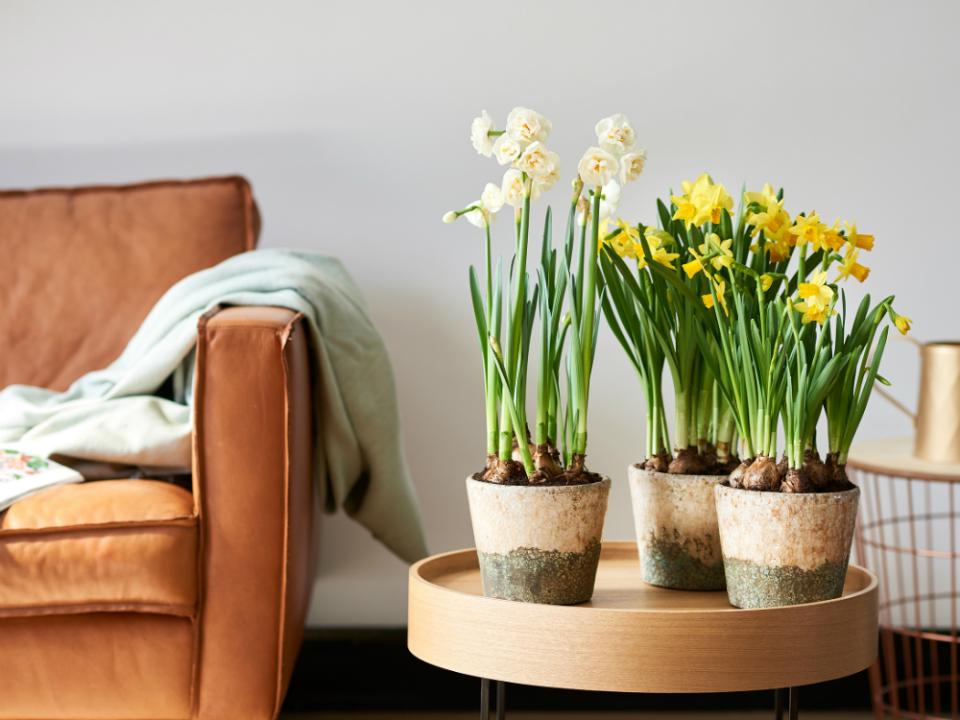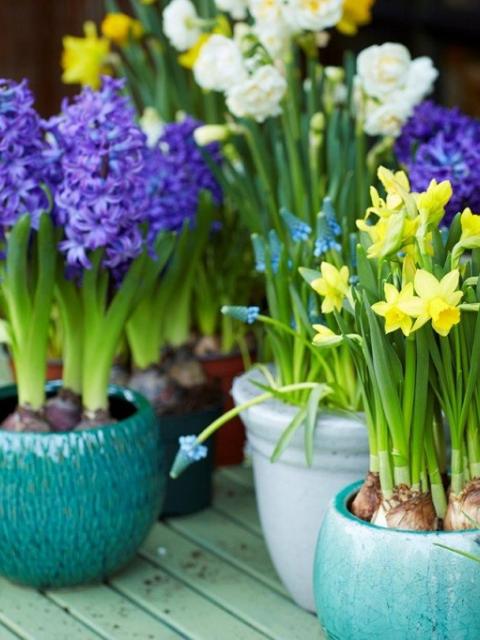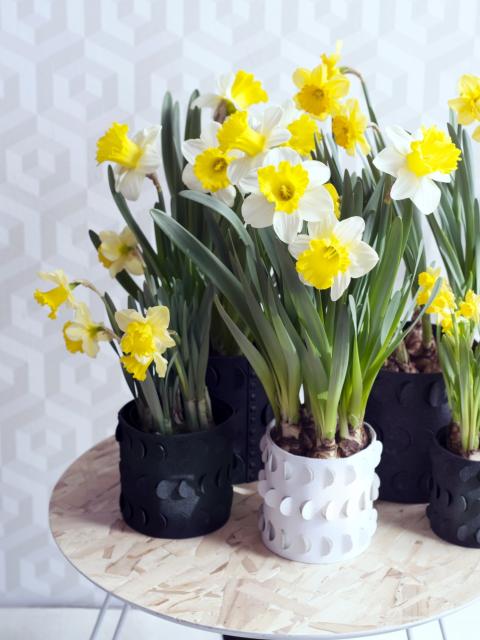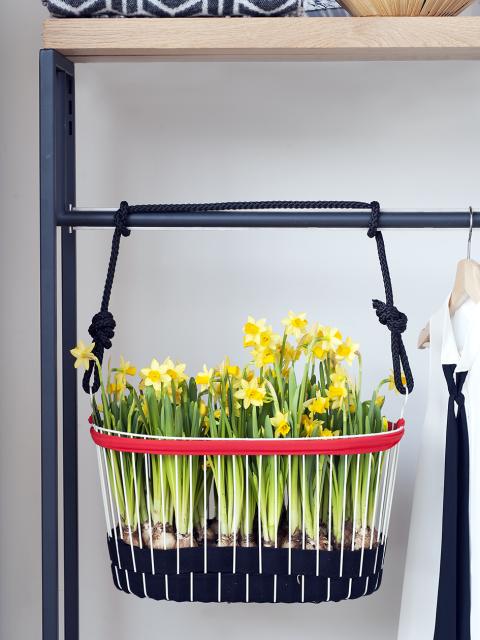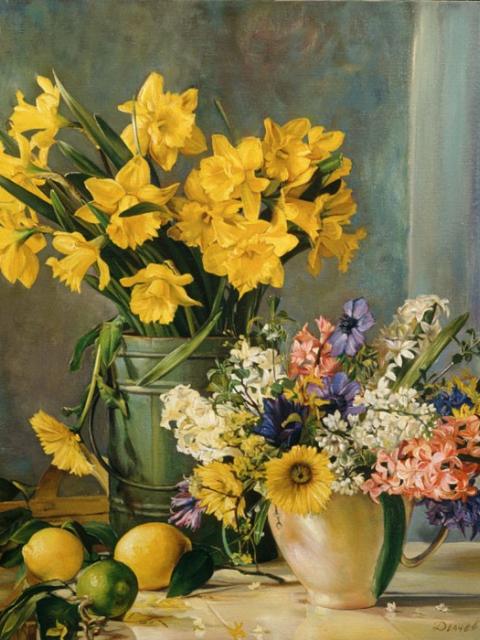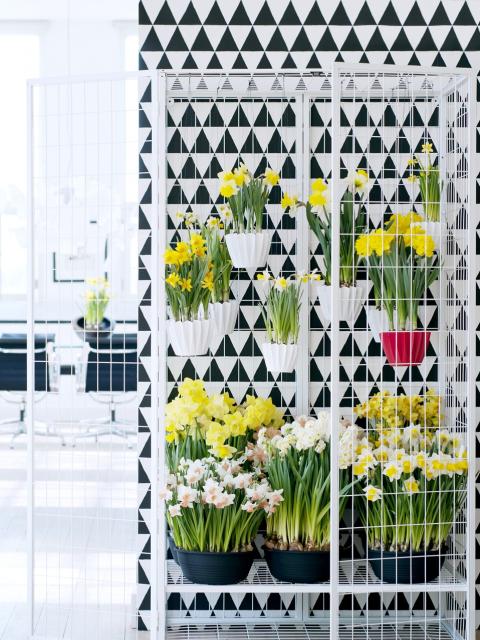Symbolism
The plant is named after the idle hunter in Greek mythology. Narcissus was so besotted with his own reflection in the water that he ultimately drowned in it. That’s why narcissi always hang their heads slightly.
The daffodil is also known as the national plant of Wales. Initially it was the leek: soldiers wore it on their hat in the early Middle Ages in order to distinguish one another from the enemy. In Welsh the two words are very similar: Cenhinen = Leek, Cenhinen Pedr = Daffodil/Narcissus. Because the latter is rather more attractive than the leek, it has gradually become the national symbol over the years. It helps that the flower grows and flowers profusely in Wales.
Origin
Double flowers, single colour or spotted, large yellow trumpets, small sprays of white flowers: there are some 88 different species of narcissus in twelve categories. They’re all derived from the wild narcissus, which has been growing in the northern hemisphere for as long as people can remember. The species that we know here mainly spread to northern Europe from Spain and Portugal. A few species also have an exquisite scent.
While Shakespeare's daffodil is the wild or true English daffodil, many more species were introduced in Devonshire and the west of England. Botanist John Gerard, in his extensive documentation on daffodils, both wild and cultivated, described 24 species in London gardens alone in 1597.

